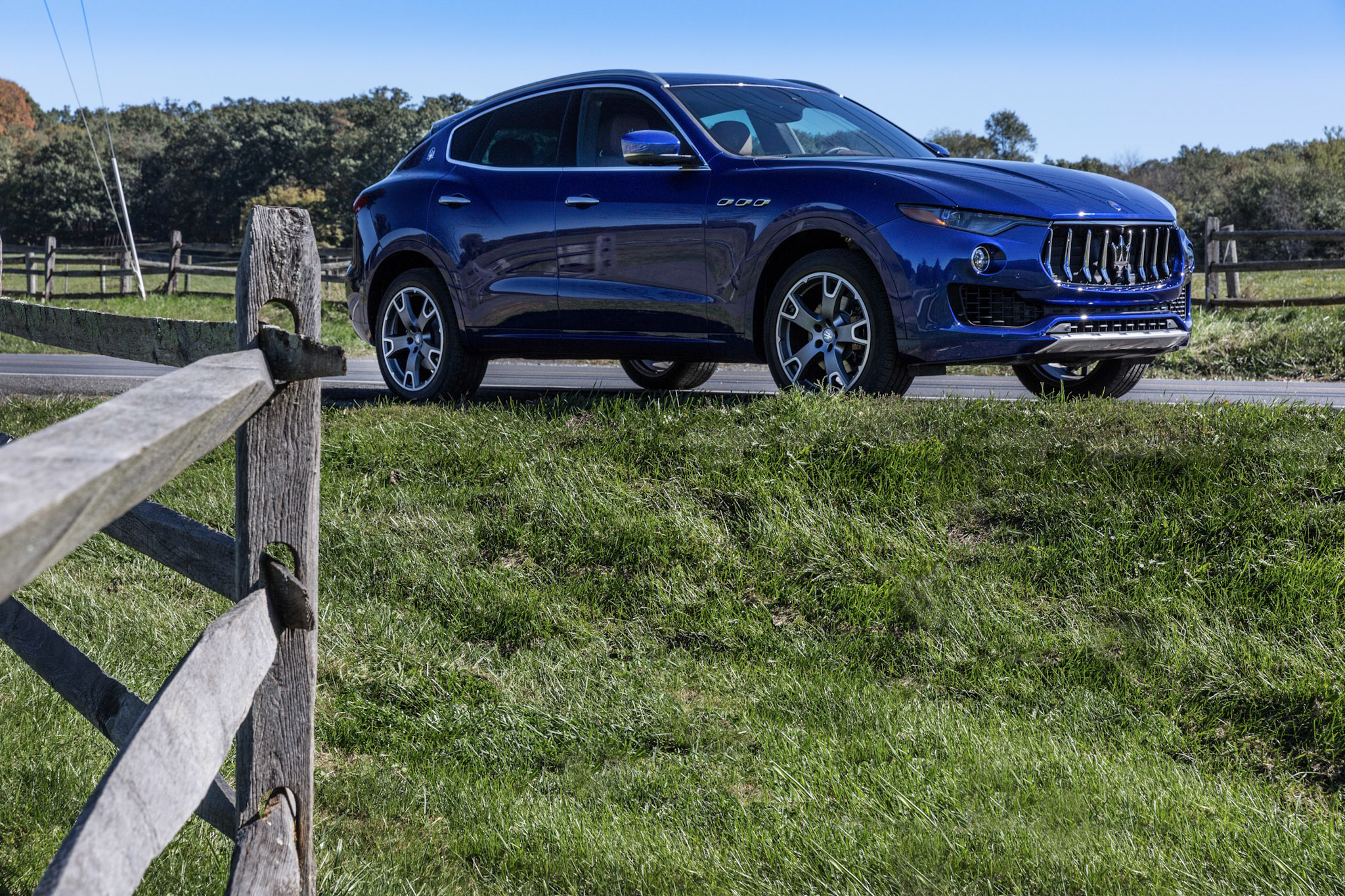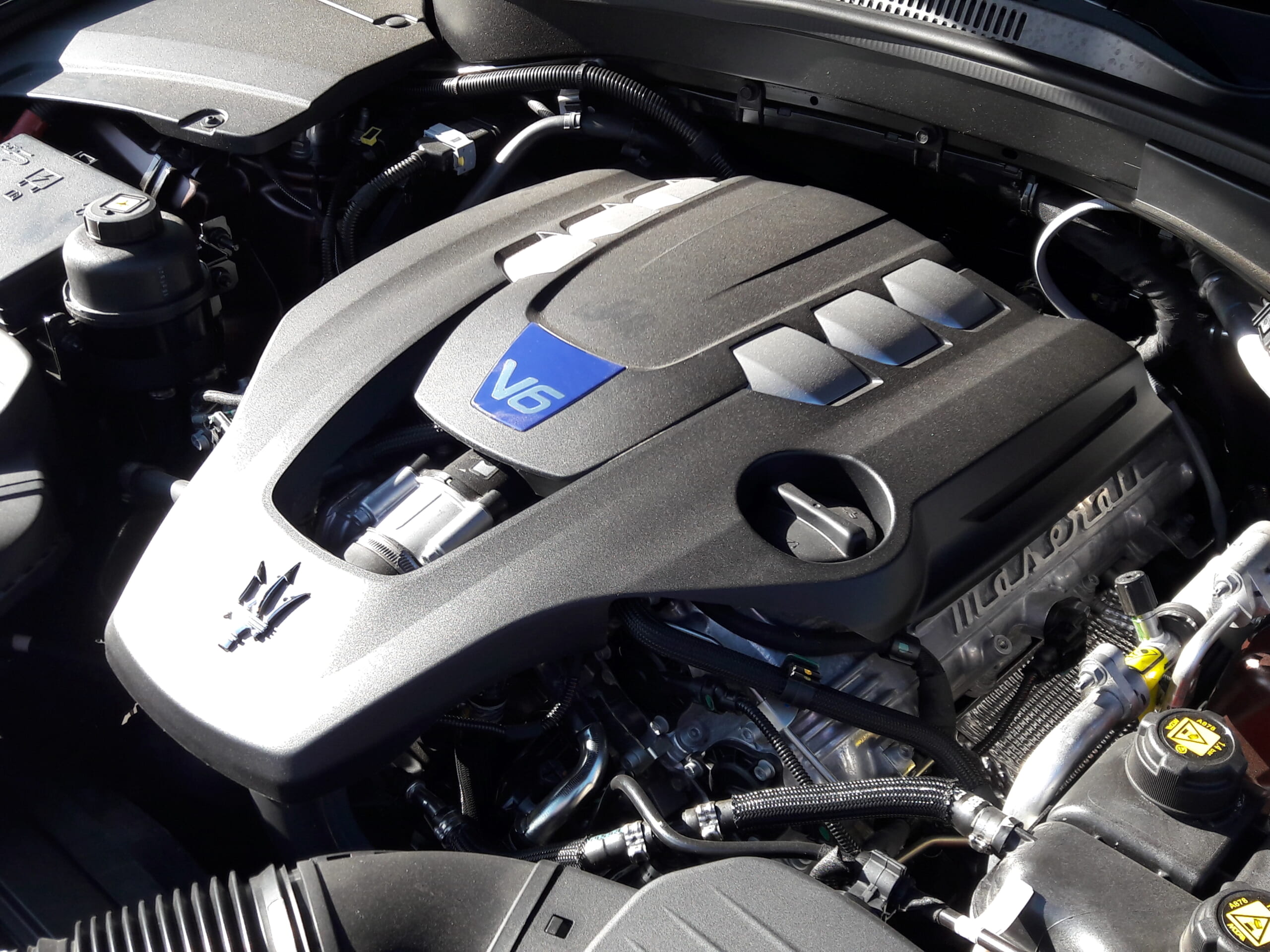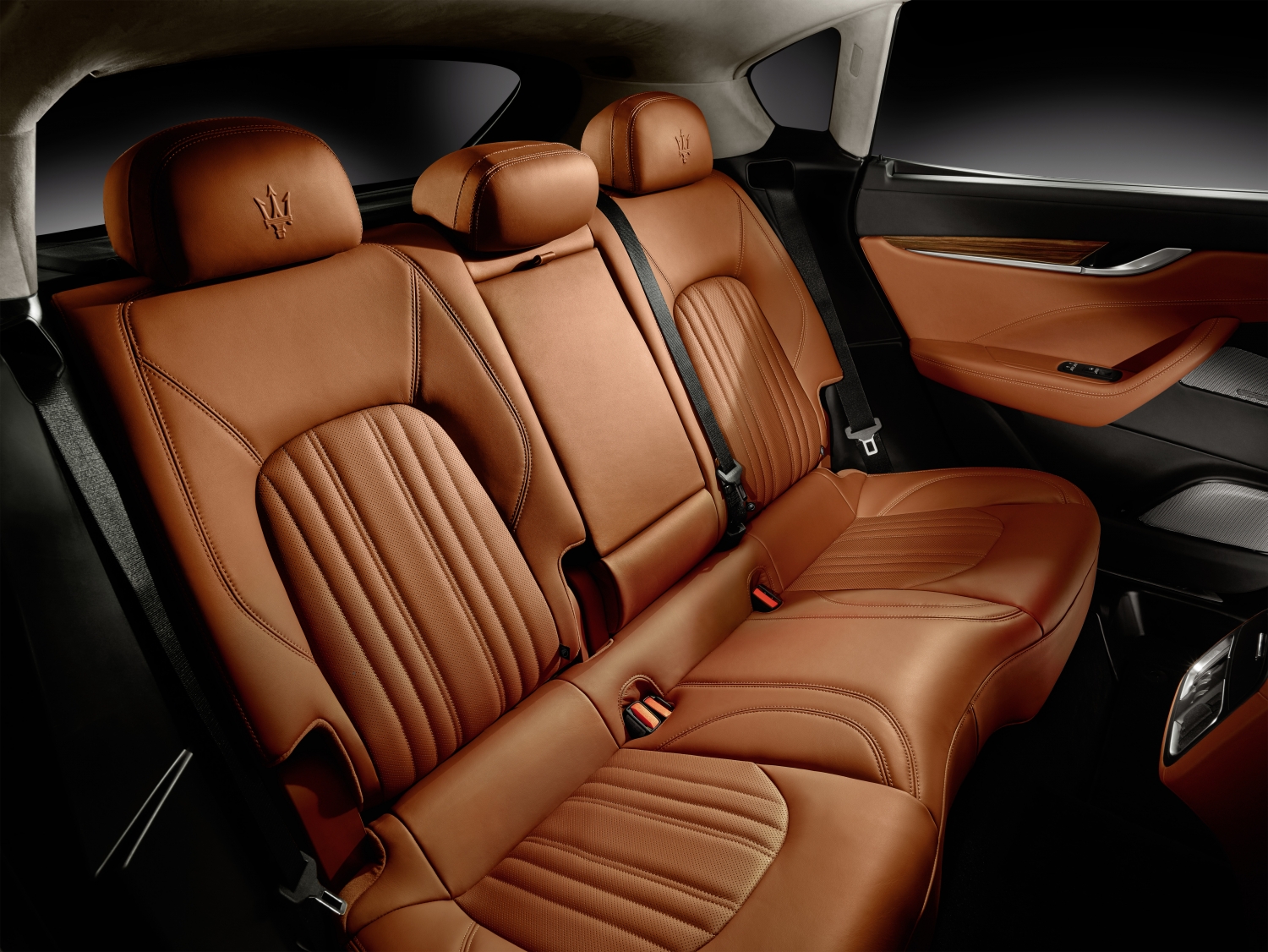10 Reasons We’re Obsessed with Maserati’s Ferrari-Engined SUV
Yes, the Levante is the real deal.

No more excuses: The Maserati Levante luxury sport-utility has got to be good. No, let’s make that really good, if it’s going to stand any chance at cracking the red-hot luxury SUV market. With fiercely intense competition from rivals like the Porsche Cayenne, BMW X5, and the also recently launched Jaguar F-Pace, the Italian automaker simply can’t afford to make any mistakes with its first entry into the sport-utility field.
Having a thunderous Ferrari-sourced engine under the hood is a good starting point, that’s for certain. More on that later.
We jumped behind the wheel of the Levante and took it out for a spin on the winding roads of the scenic Hudson Valley just North of New York City to find out whether or not this blend of Italian power, speed, and style would translate in the world of cargo-toting and four-wheel-drive sport-utes. Could the Levante make good on its promise of high performance and driving poise, or would Maserati’s stab at the world of SUVs be as appetizing as ketchup on cold spaghetti?
1. It’s Suited Up
For better or worse, the Levante doesn’t look like any other SUV on the road. Seeing it on public roads and away from the harsh overhead lights of the auto show circuit, its chrome detailing and sharply creased curves are serious attention-grabbers in an ocean of “me-too” car design. While exterior styling is highly subjective, you’d have to be pretty cold-hearted to not be wooed by that large Maserati trident emblem set in the middle of the chromed front grille. The 20-inch wheels fitted to our test vehicle look like they could have come straight of some mid-engine supercar, too. Only the tail-end, with tapering D-pillars and the sharp cut of the hatch as well as pronounced rear fender curves, make it look a little fussy and disjointed from certain angles.
2. Ferrari Bragging Rights
The moment you turn the ignition, you know something special is going on. That’s because none other than Ferrari (heard of them?) has been tasked with constructing the heart of this Maserati SUV. The Levante’s 3.0-liter twin-turbocharged V-6 is available in two states of tune—the range-topping S trim level we tested delivers 424-horsepower. According to Maserati’s stopwatch, that’s enough to propel the Levante from 0 to 60 miles per hour in just 5 seconds. The standard model still produces a stout 345 horsepower and will do the same run in 5.8 seconds. But if you’re putting a Maserati in your garage, why not go all in, right?
3. Skyhook Suspension for the Win
In an era of annoying alphanumeric model names and strange engineering code, a great name means so much. Maserati’s Skyhook air suspension not only brings to mind vintage L.A. Lakers games—bonus points if you name the player—it also does an excellent job of keeping the Levante planted firmly on the road without rattling you to pieces over broken pavement and New York-style potholes. Working in conjunction with a double-wishbone front suspension and multi-link rear, the double chamber air springs adjust from their softest to firmest setting in only 100 milliseconds. The ride is on the harder side of the SUV spectrum, no doubt about it. Our driving route through the Hudson Valley included some pretty vicious pavement, however, and not once did the Maserati feel flustered or out of its element.

4. Serious Pipes
While the Ferrari pedigree of this engine is impressive, it’s the sound that we truly love. At idle, the V-6 burbles like a cross between an exotic car and a powerboat. On the move—especially after pressing the Sport button on the center console which opens the exhaust baffles—the noise grows in fury and complexity. Part pit-bull bark/part banshee scream, the Leavante produces an intoxicating mechanical sound that should be bottled and sold by the ounce.
5. Happily Hydraulic
You’re looking at something of an automotive unicorn here. That’s because Maserati has stuck with hydraulic steering in an era of electronically controlled systems. What’s the point? Well, honest-to-god steering feel, for starters. Even the best electronic steering systems can feel artificial, especially when pushing hard on a road or racetrack. The Levante’s steering is devoid of any phony feel, that bicep bursting resistance that is meant to mimic actual steering response. Resistance builds the faster you go in the Levante, though it’s natural and linear in how it operates.
6. Paddle Power
Maserati offers one transmission in the Levante, and we’re breathing a huge sigh of relief after experiencing it. Today’s modern gearboxes of 8 (or more) gears are great, in theory. Except that too many become indecisive messes, clunking from gear to gear abruptly or, even worse, stubbornly refusing to shift when you need it most. The ZF-sourced 8-speed in the Levante is a peach, in that we hardly noticed it at all. Shifts are smooth, quick, and nearly seamless. Two large aluminum paddle-shifters are fixed to the steering column, if you want to take control. Press the M [Manual] button on the center console and the gearbox only intervenes if you want to downshift too soon, or when you come to a stop and forget to shift into first. Otherwise, you’re free to zing that turbo V-6 up to redline, then keep it there as long as you like. Just don’t pay any attention to your MPGS which, on the best day, will struggle to crack 20 mpg on the highway.
7. Location, Location
Maserati North America wasn’t about to hand us the keys in some dingy downtown parking lot. Perish the thought! Approximately one hour’s drive north of Manhattan, Blue Hill at Stone Barns is the country cousin to the Michelin-starred restaurant of the same name in Greenwich Village. Locally sourced ingredients, a constantly evolving seasonal menu, and bottles of wine that cost more than you paid for your first car are all part of what make this restaurant a culinary tour de force. Set in the middle of 80-acres of rolling fields awash in fall colors, this working farm made the perfect backdrop for a posh SUV. That, and the turkeys. Lots of turkeys. Everywhere we drove, there were more turkeys. At least they gave us the chance to test the Levante’s 6-piston caliper front brakes. (Though with Thanksgiving so close, why did we bother?)
8. Business Class Cabin
Leather, wood and, believe or not, interior ergonomics that don’t look like a kindergarten class was assigned Dashboard Layout 101. Is this really an Italian car? With all due respect, past Maserati cabins have often been big on artistic flourish, and less impressive in terms of fit and finish. The Levante combines the level of luxury you expect in a vehicle that starts at $73,200 (including destination fee) and stretches to $106,000, if you throw everything onto it. Except now, the 8.4-inch touchscreen comes paired to a complimentary control knobs on the center console. The audio controls, navigation, and other major functions are logically placed and easy to use. Apple CarPlay and Android Auto are also standard fitment on all Levante models. There is plenty of room for real-size adults in the second row, and the 19.4 cubic feet of cargo room is competitive, if not cavernous, for its market segment. We were pleased with a quality of the standard Harman Kardon stereo but, if you wish, an optional Bowers & Wilkins surround sound system promises to give the Levante’s bellowing engine a run for its money.

9. Hypnotizing All-Wheel-Drive
All Levante models come with all-wheel-drive as standard. This system can transfer up to 100-percent of power to the rear wheels, if it senses you’re in the mood for a sportier level of handling. Should the road surface get slippery, or you bumble your braking point, the AWD system will automatically transfer up to 50-percent of power to the front wheels, as needed. Front torque vectoring and a mechanical rear limited-slip differential are also some of the means of keeping this Maserati wheels down, and cabin up, no matter the weather conditions. Just don’t do what we did and get hypnotized by the display between the center dials, which shows exactly how the power is being transferred between the front and rear wheels.
10. Coming Up Short, Thankfully
The Levante is bigger than it looks, stretching six inches longer than a Porsche Cayenne. And despite having a hood, hatch, doors and fenders all crafted out of lightweight aluminum, the Levante still tips the scales at 4,600 lbs. Credit the exterior lines with hiding that bulk, and kudos to the Levante’s braking system for hauling things to a rapid stop. Maserati says the Levante will decelerate from 60 to 0 mph in only 116 feet. That’s comparable to many sports cars, much less SUVs that with a towing capacity of 6,000 lbs.
Despite its size, the Levante is no shrinking violet indeed.
